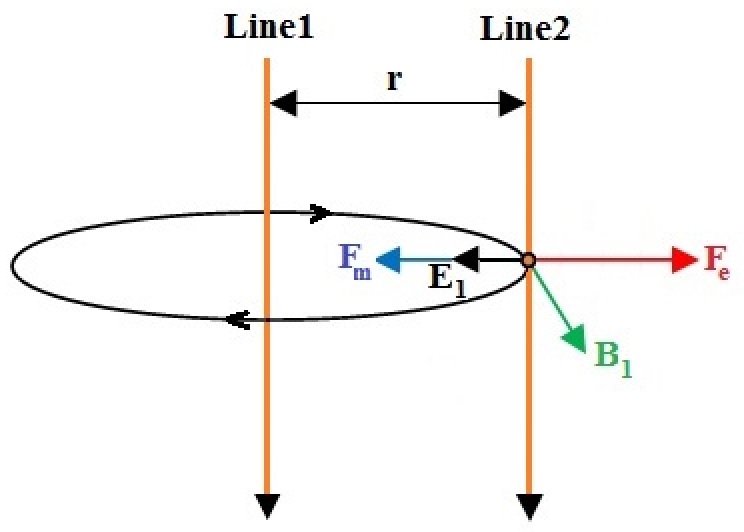Taking a closer look at LHC
Basically Linac4 works in the same way that any linear accelerator. It uses radiofrequency cavities to charge cylindrical conductors. The ions H- injected from de ions source pass through the conductors, which are alternately charged positive or negative. The conductors behind them push particles and the conductors ahead of them pull, causing the particles to accelerate. Small quadrupole magnets ensure the hydrogen ions remain in a tight beam.
Some of Physics at LINAC 4.
Let's calculate how ions H- interact among them as they are running, by using a simple aproximation.
In a simple aproach we could consider that the beam is composed by an infinite number of "lines" (or "streams") of ions H- contained in a cylinder that represents our beam. It is like a number of "spaghettis" with negative charge that create and suffer electrical and magnetic forces among them.
Any two "lines" of ions H- traveling in one direction with velocity v and spaced by a distance r, will experience the relative force that we are going to calculate.
In this regard, every particle in one "line" feels the Lorentz Force produced by the other "line":
![]()

Both forces created for the "line1" are acting on every particle of "line2" in opposite directions. So:
![]()
The value of E1 acting on each particule can be calculated from Gauss Law (electric field a distance r created by an infinitely long wire):

where λ is the "linear charge density".
The value of B1 can be calculated from Biot-Savart Law:
![]()
Where I is the intensity of electrical current in the line1
Taking again λ we can substitute I :

So we have for B1:

Taking (2) and (3) to (1):

Rearranging the last expression:

Since
![]()
we have

or

And finally:

or
![]()
So the repulsive force, F , depends on the value of λ, or E, which limits the number of particle per bunch (per pulse). But, due to the term (1/γ2), F decrease dramatically in relativistic conditions.
So, the faster the particles go, the smaller the repulsive F is.
|
AUTHORS Xabier Cid Vidal, PhD in experimental Particle Physics for Santiago University (USC). Research Fellow in experimental Particle Physics at CERN from January 2013 to Decembre 2015. He was until 2022 linked to the Department of Particle Physics of the USC as a "Juan de La Cierva", "Ramon y Cajal" fellow (Spanish Postdoctoral Senior Grants), and Associate Professor. Since 2023 is Senior Lecturer in that Department.(ORCID). Ramon Cid Manzano, until his retirement in 2020 was secondary school Physics Teacher at IES de SAR (Santiago - Spain), and part-time Lecturer (Profesor Asociado) in Faculty of Education at the University of Santiago (Spain). He has a Degree in Physics and a Degree in Chemistry, and he is PhD for Santiago University (USC) (ORCID). |
CERN CERN Experimental Physics Department CERN and the Environment |
LHC |
IMPORTANT NOTICE
For the bibliography used when writing this Section please go to the References Section
© Xabier Cid Vidal & Ramon Cid - rcid@lhc-closer.es | SANTIAGO (SPAIN) |



